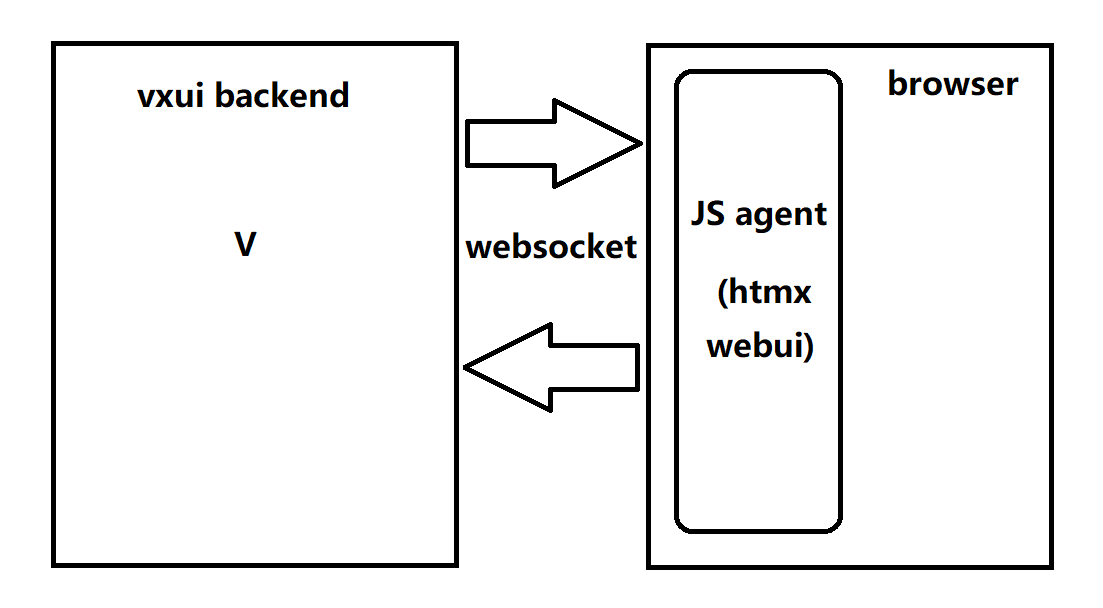⚠️ Notice:
vxui it's not a web-server solution or a framework, but it's an lightweight portable lib to use installed web browser as a user interface.
Currently, vxui is in it's alpha stage.
- vxui = browser + htmx/webui + websocket + v *
vxui is a cross-platform desktop UI framework which use your browser as screen, and use V lang as backend. It reply on Websocket, no http/https, no web server!
- Every desktop should has a installed web browser, and it's display it much better than native GUI. Because there are too many frontend designers in the world!
- When develop a desktop framework with HTML+CSS+JS, why should we integrate a web server? By using websocket, we can totally bypass the integerated web server!
- Cross-platform. It should be able to running on Windows/Linux/MacOS;
- Extensible. You can use any frontend framework develop your UI, all you need is just add some tags in your html files;
- Light weight. vxui contain only a pure-V websocket server, no web server;
- Powerful. vxui backend can communication with frondend bi-direction and realtime;
- Flexible. vxui provide websocket-based communication, you can totally define your own protocol, no longer limited by AJAX's request-response model.
- frontend: It is your installed web browser. And a modified vesion of htmx with vxui_htmx.js are all you need.
- backend: v
- between frondend and backend, it is websocket.
- When you start your App, it will first look for a free port on your OS, then the websocket server listen on this port;
- The App will use command line spawn a process, start the web server, which will open your UI's first html file; Every your UI html file should include a JS agent file.
- The JS agent in your html file will use the port communication with backend websocket server;
- By using htmx or webui, every event catch by the JS agent(mouse click, keyup, text change...), will be transfered to your backend; Currently, vxui will replace all AJAX request in your htmx files with websocket communication.
<script src="./js/htmx.js"></script>
<script src="./js/vxui_htmx.js"></script>
<span hx-ext="vxui_htmx"/>
<!-- have a button POST a click via websocket -->
<button hx-post="/clicked" hx-swap="outerHTML">
Click Me
</button>The hx-post and hx-swap attributes tell htmx & vxui-htmx:
"When a user clicks on this button, issue an websocket request to /clicked(
hx-post), and replace the entire button with the response(hx-swap)"
And your websocket server will recieve this message:
{"verb":"post","path":"/clicked","elt":"BUTTON","parameters":{},"HEADERS":{"HX-Request":"true","HX-Trigger":null,"HX-Trigger-Name":null,"HX-Target":null,"HX-Current-URL":"file:///home/kbkpbot/.vmodules/vxui/static/ss.html"}}- install vxui
v install --git https://github.com/kbkpbot/vxui.git- check examples
MIT license
